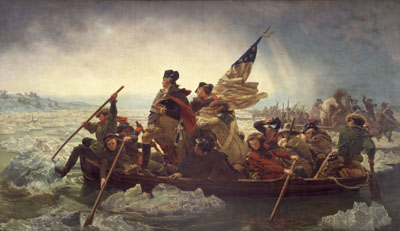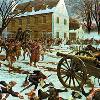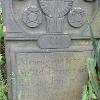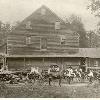George Nicholas Spaht (son of Michael and Cunegunda Spaht) was born and raised in Cassell, Germany. One day, around April of 1776, while he was on his way to school, George was kidnapped by two soldiers of the Grand Duke Frederick II, and sold to King George the III of England to serve against the rebellious colonies of America. He was 17 years old at the time he was captured, along with around 22,000 other young boys. The parents of these boys couldn't fight against the King. If the mother protested she would be thrown into prison and the father would be flogged.
As noted above, George was captured and confined near Winchester, VA. The imprisonment was in an area largely colonized by german immigrants, so he was probably well treated. There is an unsubstantiated story that he may have fought on the colonist side before the war ended in 1781. Captured troops were free to go home, but George Nicholas Spaid decided to stay in America.
In 1782 he married Elizabeth Cale (Kale), she was the daughter of a pioneer German whose home was on the west bank of Capon river about 30 miles west of Winchester, Va. Her family lived on Capon river before the revolutionary war. This is where George and Elizabeth lived and bore 9 children. George and Elizabeth later moved to Ohio around 1819.
Elizabeth Cale's father John Cale, built a cabin in the area of Capon in the 1740s. On April 6, 1750, George Washington surveyed the property that was to become the mill for a plat for Richard Arnold, Jr. This later was sold to Robert Hook.
A one-room school house was built near the mill, George Nicholas Spaid serving as the teacher. I have found many instances of my forebears being teachers. I have to assume that it was common for the one-room schools to be taught by volunteer local residents.
By the late 19th and early 20th century, Hook's Mills was an established community, with an inn serving the patrons of the mill, a blacksmith shed and house, the mill residence, and the Captain David Pugh House. The mill race served as a place where the local population harvested ice in the winter. Nothing remains of the mill, which was swept away in a flood in the late 1930s, but the traces of the mill race and a few scattered foundation stones.
Bessie Ouada Creswell, the great-great-granddaughter of George Nicholas Spaid married Smith Reid Brill in 1894. They purchased the old Captain David Pugh house about the turn of the 20th century. In that big 2-story house they raised their children Walton, Bama, and Russell Ervin Brill Sr. (my father). Grandfather Brill was variously a school teacher, the post master, and a farmer.
SPAID FAMILY 1708 - PRESENT
Part of the legend of George Nicholas Spaid (the spelling was changed in America) is that he was captured at the at the Battle of Trenton, NJ, Dec. 26, 1776 when General George Washington crossed the Delaware River on Christmas night. He surrounded the Hessian garrison and captured about 1000 troops.
George Washington Crossing the Delaware -
by Emanuel Leutze
Battle of Trenton by Charles McBarron.
George Nicholas Spaid 1759-1833 His tombstone in Buffalo, Guernsey County, Ohio
Hook's Mills, West Virginia, 1903 -- Saw and lumber mill, waterpower on left; grain was ground on imported stones from France; the post office was on the right. Flour ground from wheat at the mill was stored on the second floor, hay stored on the third floor. Henson Hook, the mill owner, can be seen dressed in white shirt with hand on front wheel of wagon.
For others that have gone before MEMORIES





